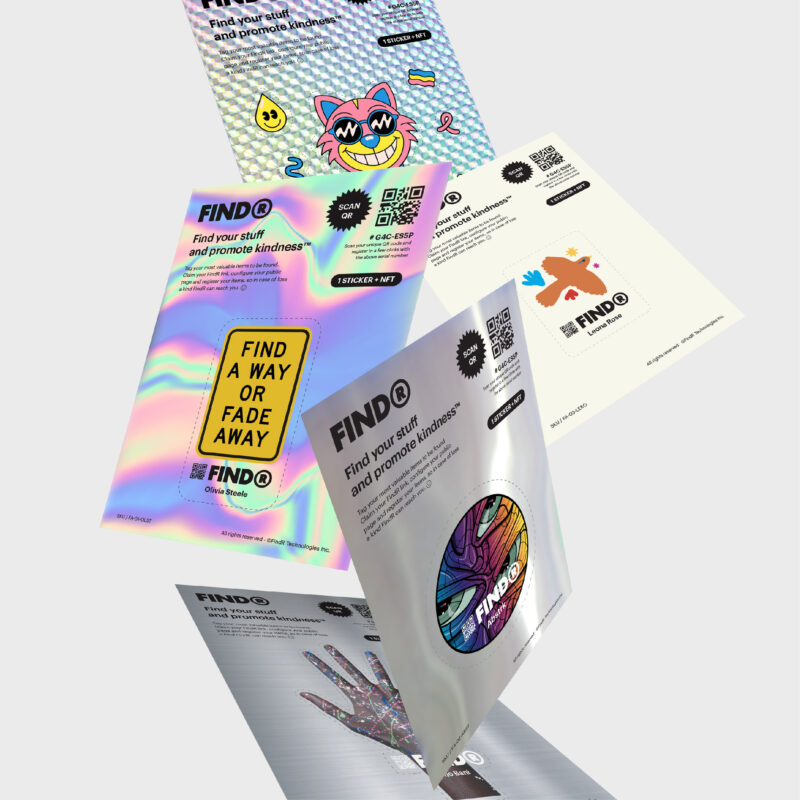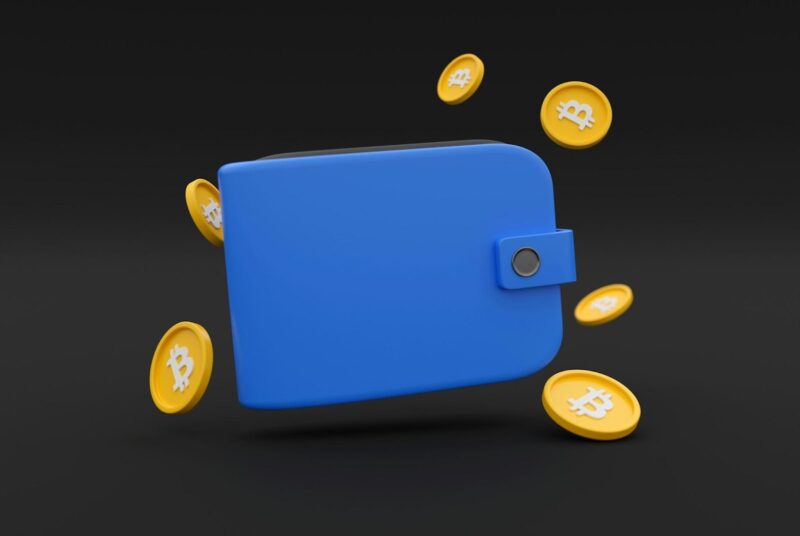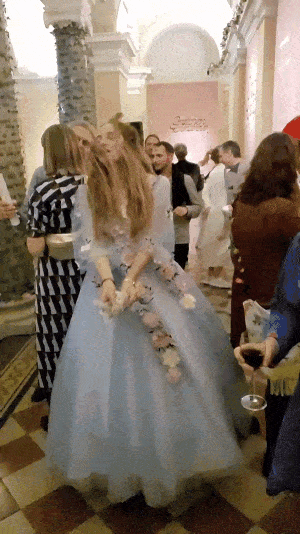
‘I’ll have some of what she’s having’ might be our response when we see someone glowing with positivity. Gretchen Andrew’s Drops with FAD bazaar gives you just such a chance. And what she’s getting is a combination of highly visible public success and deep personal satisfaction. Who wouldn’t want to buy into that? Doing so is to buy into the output of an artist who spent a decade as a fairly straight painter of oils – much of it working with Billy Childish – but was also employed by Google for 18 months, and has made her name with projects that are fundamentally defined by the Internet.
In fact, finding the London and LA-based artist online is of the essence, for Gretchen has infiltrated the AI brain of Google to make ‘search engine art’. She begins by thinking about what she wants, but doesn’t have – yet! – and visualises that in the form of vision boards. ‘I make use of symbolism and metaphors, then sometimes just illustrate exactly what I want to see happen’, explains Gretchen. ‘I then conduct research using Google’s own tools to figure out how I can best position that within a website… I use sites like Pinterest and Trip Adviser to post images of my work and build relevance by using the sites exactly as they are meant to be used – just building my vision boards and my texts into the kind of content that these sites desire. I wait for Google’s spiders to call my site, index it and associate my key words with my vision boards… then I get to experience my desires manifested through Google’s search page.’
Thus, Gretchen reformats her online persona by coaxing Google’s algorithms into submitting to her whims. She has, for example, a desire to be on the cover of Artforum someday, and has arranged for her vision boards to come up as top search results for the query ‘Cover of Artforum’. These, she explains, ‘are not at all confusing to people. They are clearly not real covers of Artforum. They aren’t even fake covers of Artforum. They are aspirational covers of Artforum.’ What sort of success is this? It’s as if Gretchen has moved directly to the contemporary evidence of success – online presence – without troubling about the actual achievement. Surely, you might think, that won’t make her happy. And she would agree: what grounds her is daily lifetime with friends, a glass of champagne, the concept of love – ‘really cheesy things’. ‘Being on the cover of Artforum isn’t going to make me happy’, she confirms. ‘It’s fun to have a desire and watch it evolve, but I want to be on the cover so that so I can focus on time with my friends, playing the piano, being in nature. By making work that’s future-oriented, I gain a greater awareness of what actually gives my life meaning’. That said, a further irony has developed as Gretchen’s career has escalated to the point of museum shows: the evidence of success has been converted into the real, conventional thing. Those vision boards are working…
So how can you take part in all this? Four ways come to mind. First, you can google such terms as ‘Best MFA’, ‘Contemporary Art Auction Record’, ‘Map of the EU’ and ‘The Next American President’ – as well as ‘Cover of Artforum’ – and see what comes up. You’ll find yourself looking at Gretchen’s vision boards.
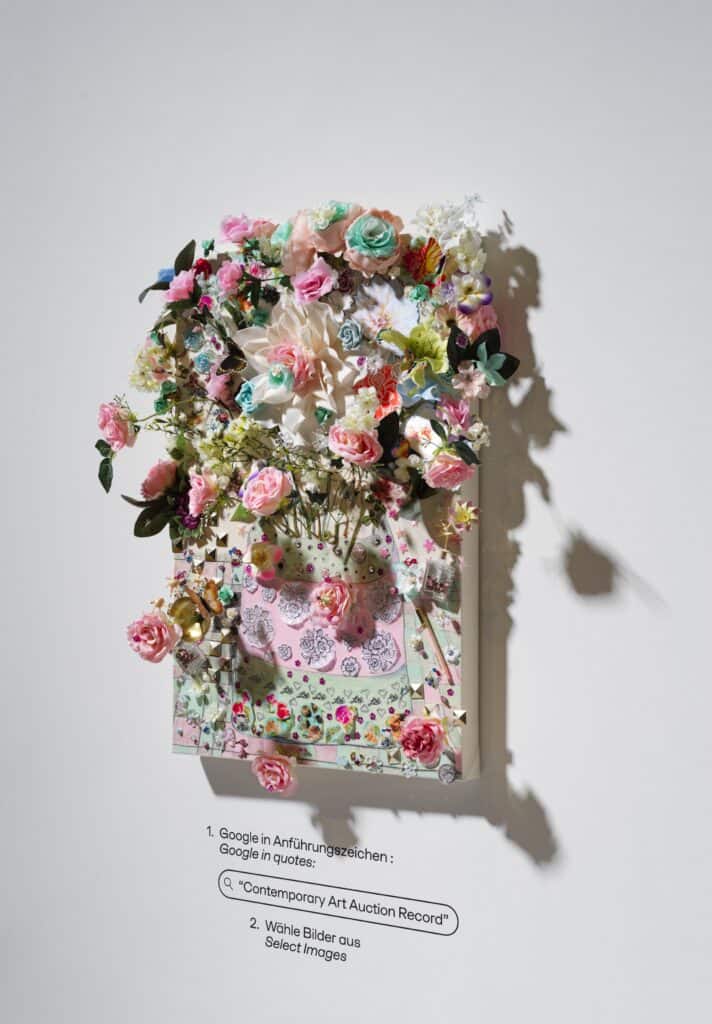
Second, you can buy the originals. The vision boards collage all sorts of items into winningly sweet, knowingly kitsch, all-over compositions that generate their own distinct and painterly language – those years with Billy Childish are still in play. The objects they are composed of are cheap and fake, typically as purchased for celebrations – photos of Rolexes, not actual watches; plastic grapes; good luck charms. That’s part of the point, to have objects that are fake, but stand in for the trajectory of taking the fake and turning it into the real. And if the boards play on the conventions of ‘girly’ and ‘trivial’, so much the better: they purposefully clash with the male-dominated worlds of AI, art, and political control, poking fun at the machismo of their power structures. Lured in by what may seem an attractive but superficial aesthetic, Gretchen’s viewers end up learning about the Internet and the powers behind it. As her success has spread beyond search engines, those original vision boards have become more expensive, but that’s good too: given that only 2% of auction sales value is generated by female artists, Gretchen sees the achievement of high prices as a feminist act. She’s not in it only for the money, but for what the money says.
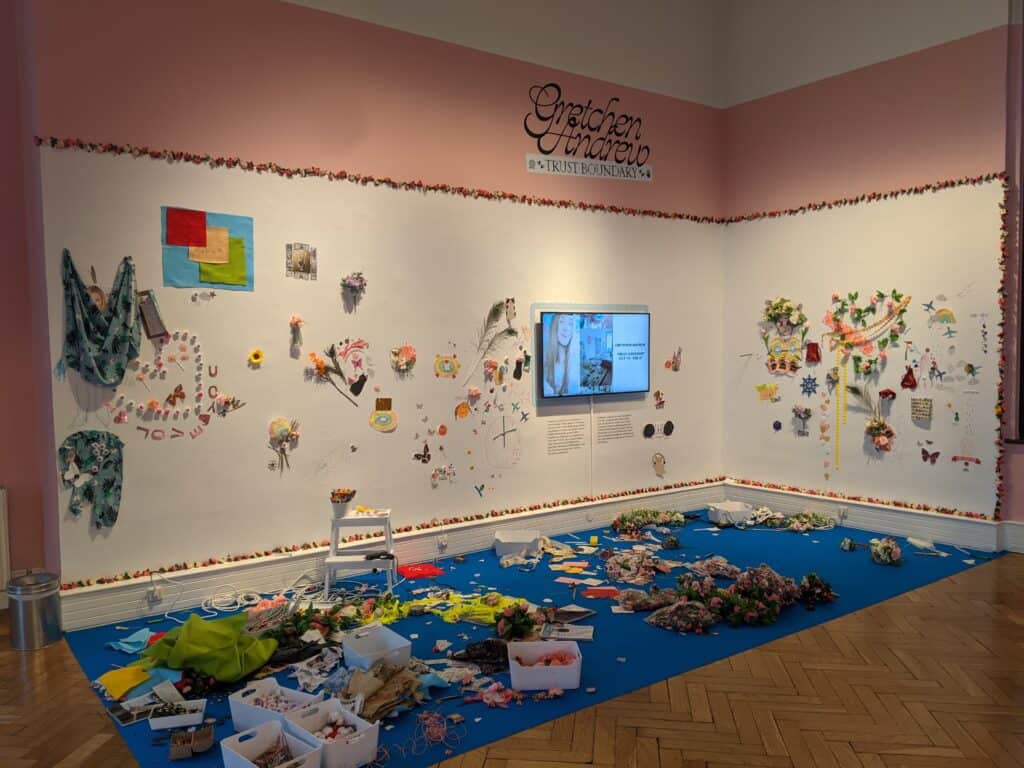
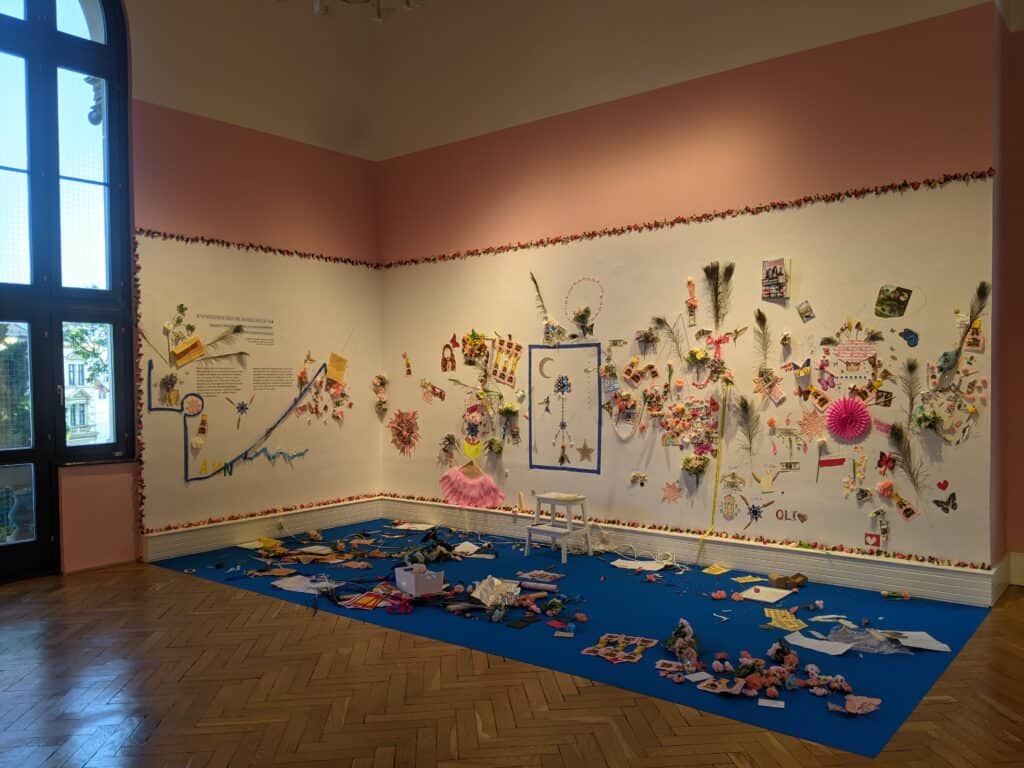
A third way to participate is to visit Linz, in Austria. There, a wing of the Francisco Carlinum Museum of Modern and Contemporary Art has become a massive, interactive vision board. The participatory installation includes glue, glitter, magazines, crafts, and, says Gretchen, ‘non-ironic desire’. Visitors are invited to adhere words and symbols of encouragement, desire, and motivation in an effort to collectively imagine and celebrate a hoped-for future.
The fourth way is to buy into Gretchen’s Drops with FAD bazaar , which tie in to that show. They aren’t NFTs exactly, but their physical equivalent, mass produced objects certified as unique via a Verisart block chain certificate. You get a physical item which might feature on the vision board, together with the block chain certification identifying it as part of her project. At one level, that might seem like an odd way to obtain a fairly worthless piece of mass production. But consider how a 1960’s party dress sold at auction for £4m – because it was certifiably worn by Marilyn Monroe as she sang ‘Happy Birthday Mr President’ to John F Kennedy. And there’s a parallel here with the most famous NFTs, where the purchaser owns the original, but anyone can copy the JPEG: Gretchen is taking what happens in NFTs and building it back into the physical world so that ‘each has meaning because I place it within the larger context of a vision board, within the still larger context of my practice with its technical tentacles into the brain of Google’s artificial intelligence… A vision board is the fetishized object of the full practice. It isn’t a full vision board, but it is a seed which is both an object and an aspiration when I use it on the vision boards. I also hope people who purchase them will see them as the seeds of their own future dreams, will take an object and grow with it’.
These more-than-cheap-objects might be a plastic butterfly, which Gretchen associates with change and growth as well as the famous ‘butterfly effect’ – she believes that she doesn’t need to know how she will achieve the impact and results she desires, but that ‘the effect of my labour can grow in magnitudes beyond my own comprehension’. It might be a purse filled with play money, as featured when envisioning how her work will sell for huge sums. It might be a pocket mirror, reflective of how there are mirrors in Linz which allow visitors to see themselves in the museum – as part of art history. Or it might be a 2022 diary with its cover encapsulating Gretchen’s treatment of ‘Dreams as Plans’.
The artist has also made some traditional NFTs. She recently dropped her first “Glitch Gif” with König Galerie’s Misa.art – it appears to us as a glitch, but Google interprets it as a complete truth. Similar to Gretchen’s physical Vision Boards this GIF causes Gretchen’s work to appear as a top search result for, ‘contemporary art auction record’. Knowing that Google registers only the first frame of a GIF, the first of the 255 frames shows Gretchen’s Vision Board for sale at Sotheby’s auction house while the remainder presents the viewer with a pretty, and pleasant, animation in which growing plants act as a metaphor for financial growth. This NFT is a vector for her hack. It carries the necessary metadata to infiltrate Google’s artificial intelligence. She also produced an NFT with Unit Gallery that made her hack of contemporary art auction records collectable. This was quite reasonably called ‘Peak Nerdiness’ by The Times, London.

These drops with FAD bazaar are different, as – like much of Gretchen’s digitally informed practice – they are physical. Of course, many contemporary artists work across media and choose whichever approach best enables them to express a given set of interests: there’s no reason why an NFT or similar should not emerge from that assessment. All the same, there’s something attractively natural about Gretchen Andrew making a physical NFT-style drop, and about how it then ripples out into such a conceptually rich practice. I’ll have some of what she’s having…

